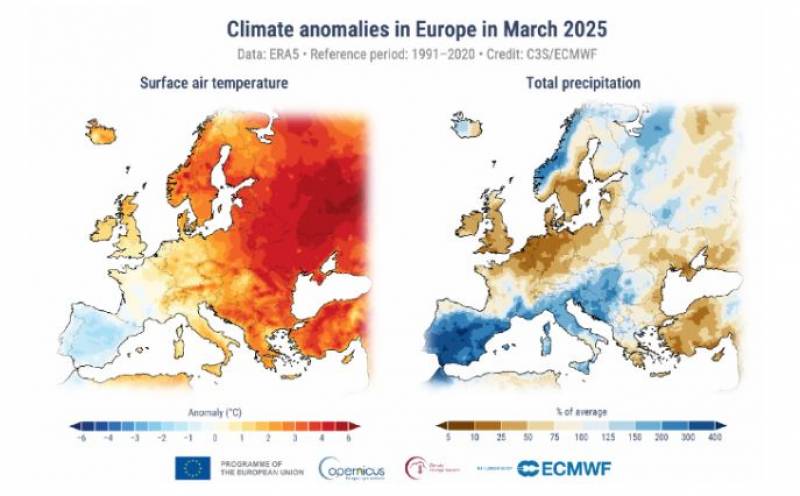
To be listed on the CAMPOSOL TODAY MAP please call +34 968 018 268.
article_detail
Soaked and scorched: Spain faces floods as Europe sets new heat record
March 2025 was the hottest of all time in Europe, but it was also ravaged by torrential downpours and storms

Since we’re in danger or wearing out our brollies and raincoats here in Spain, it might be a little hard to believe, but we have just come through yet another month where heat records were broken. The figures are in and it turns out that March 2025 was the warmest third month of all time in Europe, with a surface temperature of 6.03ºC above the historic average.
Globally, it was the second warmest March on record, according to the Copernicus Climate Change Service, surpassed only by 2024, a worrying indication of climate change and the overall warming of our planet.
And for the experts, this new record is part of an alarming trend: 20 of the last 21 months have seen global temperatures more than 1.5°C above pre-industrial levels, a key threshold in the Paris Agreement commitments.
This might be stating the obvious a little, but the extreme temperatures last month were accompanied by very unusual rainfall patterns, not just in Spain but on the rest of the continent as well. According to Copernicus, many parts of Europe experienced their driest March in history, while others splashed through the wettest in at least 47 years.
In particular, the Iberian Peninsula was hit by a succession of storms and widespread flooding that started right at the beginning of the hottest month, while drought prevailed in the United Kingdom, Ireland and much of eastern and central Europe.
Beyond this continent, above-average temperatures were recorded in large areas of the Arctic, Asia, North America and Oceania. In contrast, eastern Canada and far eastern Russia saw below-average temperatures.
The bulletin's data also highlight the critical situation of Arctic sea ice. The amount in March 2025 was the lowest ever recorded for that month in 47 years of satellite observations, at 6% below average.
Furthermore, the annual maximum of Arctic sea ice —typically reached in March— was the lowest on record.
The ocean wasn’t spared from the warming either. The average sea surface temperature between 60°S and 60°N reached 20.96°C, the second highest value for a March month on record. In areas such as the Mediterranean Sea and the northeast Atlantic, large areas with local temperature records were detected.
In Antarctica, sea ice extent was 24% below average, with particularly low values in most ocean sectors except the western Weddell Sea.
The Copernicus report reflects the direct impact of global warming on the climate system, and the news is far from encouraging. The 12-month period from April 2024 to March 2025 presents a global temperature anomaly of +1.59°C relative to the pre-industrial level, underscoring the urgency of global climate change mitigation and adaptation measures.
Join our Spain Weather Watch Facebook group for regular weather and climate change updates
Image: C3S/ECMWF/EUMETSAT
Loading
See more environmental news about Spain:
OR
Sign up for the Spanish News Today Editors Roundup Weekly Bulletin to get a comprehensive email with all the week’s news for Spain, Murcia, Alicante and Andalucía.
Get a sneak peek – here are a few of our recent Subscription Bulletins:
Discount Special Offer subscription:
36.95€ for 48 Editor’s Weekly News Roundup bulletins!
Please CLICK THE BUTTON to subscribe.
Contact Murcia Today: Editorial 000 000 000 /
Office 000 000 000

























